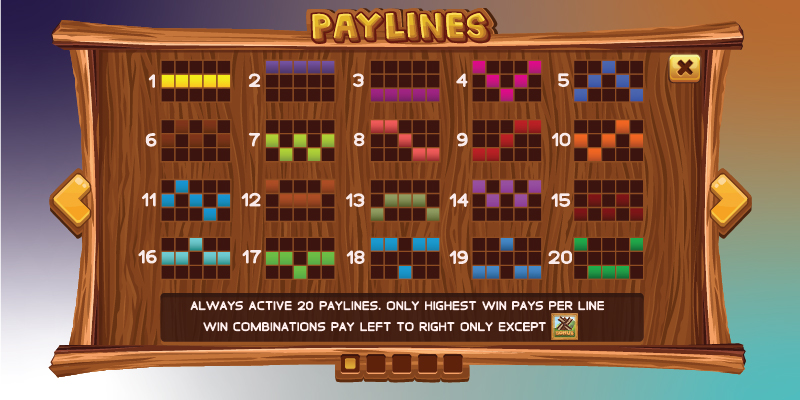The Future of iGaming: 7 Trends That Will Redefine Online Casinos in 2026
The iGaming industry has never stood still. Fueled by innovation, evolving player expectations, and rapid advances in technology, online casinos continue to transform at a breathtaking pace. As we move closer to 2026, a new wave of trends is set to reshape the way players interact with games, manage their bankrolls, and experience the thrill of wagering online.
From immersive technologies to emerging payment methods, these innovations promise to make iGaming more personalized, secure, and engaging than ever before. Below, we explore seven key trends that every player, operator, and industry watcher should keep an eye on.

1. AI and Personalization Will Define Player Experience
Artificial intelligence is no longer just a buzzword - it’s becoming the backbone of next-generation online casinos. By 2026, expect platforms to use AI to deliver ultra-personalized experiences tailored to each player’s preferences.
Recommendation engines will suggest games based on playing style, skill level, and even mood. AI-powered chatbots will provide 24/7 support, resolving issues instantly. Moreover, responsible gaming tools will become smarter, using behavioral analytics to detect early signs of problem gambling and offer tailored interventions.
In short, AI will make iGaming not just more engaging but also safer and more user-friendly.
2. Immersive Tech: VR and AR Casinos Are Coming
Virtual reality (VR) and augmented reality (AR) are poised to revolutionize how players experience online casinos. Early prototypes already allow players to walk through digital casino floors, interact with other players, and sit at virtual tables — all from the comfort of their homes.
By 2026, these experiences will be far more refined and widely accessible. Imagine donning a VR headset and joining a live poker tournament in a fully rendered 3D casino, complete with realistic avatars and real-time reactions. AR, on the other hand, could overlay digital game elements onto real-world environments, blurring the line between physical and digital gaming.
This leap in immersion will fundamentally change how we define “online” gambling — transforming it from a solo experience into a deeply social and interactive one.
3. Blockchain and Crypto Will Reshape Payments
The payment landscape in iGaming is evolving rapidly, and blockchain technology is leading the charge. By 2026, more casinos will embrace cryptocurrencies, offering faster, more secure, and anonymous transactions. Blockchain’s decentralized nature also makes it ideal for provably fair gaming, ensuring that results cannot be tampered with and increasing trust among players.
Smart contracts will automate payouts and bonus releases, reducing the need for manual intervention and minimizing disputes. Beyond payments, tokenized loyalty programs and NFT-based rewards could emerge, allowing players to trade or sell their digital assets outside the casino ecosystem.
For players, this means greater control, transparency, and flexibility when managing their gaming finances.
4. Hyper-Regulation and Safer Gambling Practices
As the industry grows, regulators worldwide are stepping up efforts to ensure player protection and transparency. Stricter licensing requirements, enhanced identity verification, and mandatory responsible gambling tools will become standard by 2026.
Operators will likely invest heavily in compliance technologies, including biometric logins and AI-driven fraud detection, to stay ahead of evolving regulations. The outcome will be a safer, more trustworthy environment for players — one that balances innovation with consumer protection.
5. Live Casino Evolution: More Than Just Streaming
Live dealer games have surged in popularity, but their evolution is far from over. Future live casino experiences will integrate gamification elements like missions, leaderboards, and achievements, transforming passive viewing into active participation.
Enhanced streaming quality, multi-camera angles, and interactive features will make players feel as if they’re sitting at a real table. Expect to see hybrid games that merge live dealers with virtual elements, offering unique, engaging formats that appeal to both traditionalists and modern gamers.
6. Cross-Platform and Mobile-First Gaming
Mobile gaming already dominates the iGaming landscape, and this trend will accelerate even further. By 2026, expect seamless cross-platform experiences, where players can start a session on their smartphone, continue on a tablet, and finish on a desktop — all without interruption.
Operators will also focus on optimizing user interfaces for mobile-first experiences, ensuring faster loading times, intuitive navigation, and gesture-based controls that make gameplay more natural on smaller screens.
7. Expansion into New Markets
Global expansion is another major driver of iGaming’s future. Regions like Latin America, Africa, and parts of Asia are expected to become major growth hubs, thanks to rising internet access and more favorable regulatory conditions.
Meanwhile, established markets will continue to mature. For instance, regulated online gambling in PA in the United States has already demonstrated strong growth, and similar markets will likely emerge across other states and countries. This geographic diversification will bring more players, more competition, and more innovation to the industry.
Final Thoughts
The future of iGaming is bright — and full of change. From AI-driven personalization and blockchain payments to immersive VR environments and global expansion, the industry is poised for a new era of innovation. For players, these trends mean more choice, more security, and more engaging experiences than ever before.
As we move closer to 2026, one thing is certain: the online casino landscape will look very different from what we know today. Those who stay ahead of these trends — whether players or operators — will be best positioned to enjoy the opportunities this dynamic industry has to offer.







.png)







